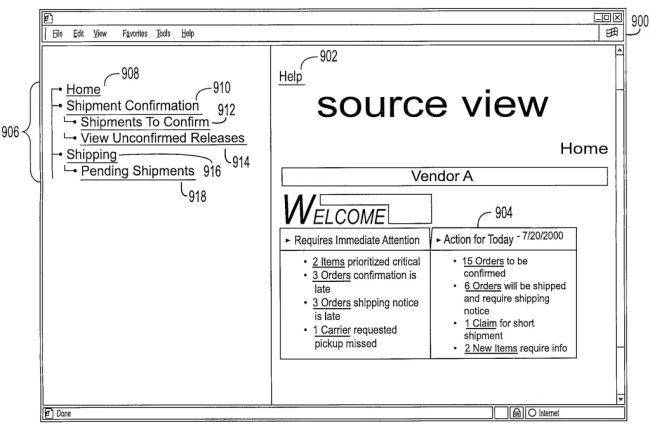The invention in this patent application concerns the field of logistics, and addresses the problem of how to effectively transfer products from source to destination sites. The board of appeal made some interesting statements about the technical character of transportation and shipping, as well as whether providing different user interfaces for the source and destination sites is technical.
Here are the practical takeaways from the decision T 2362/13 (Logistics central station/SCHNEIDER LOGISTICS) of 1.9.2020 of Technical Board of Appeal 3.5.01:
Key takeaways
The transportation of a product from A to B is not necessarily technical. It is something that humans often do (for example when dropping off a packet at the post office). Thus, unless it is done in a technical way, using technical means, the transportation of products is not technical.
Technical shipping infrastructure does not lend technical character to the activity of planning and scheduling shipments. Logistics is generally considered as falling within the categories of excluded matter in Article 52(2) EPC.
Removing functions that are irrelevant to the user from a user interface does not constitute a technical solution to a technical problem.
The invention
This European patent application relates to a "logistics central station", which is a node in a computer system for administering the shipment of products from a source site to a destination site. It has interface logic that provides a first interface allowing a first class of users affiliated with the source site to access a first set of functions, and a second interface allowing a second class of users affiliated with the destination site to access a second type of functions.
In other words, the logistics central station provides a different set of functions to the sender and the recipient of the shipment.
An example of a sender interface is shown in Figures 9A to E. It includes functions such as shipment confirmation, a view of pending shipments, and the sending of a shipping notice. Figures 10A to E shows an example of the destination interface. It has another set of functions including a "trailer arrival history".

Fig. 9A of EP 1 330 751
Here is how the invention was defined in claim 1:
Claim 1 (main request)
(i) an interface unit (304) for coupling the logistics central station (108) with at least one remote entity;
(ii) a digital processing unit (306) coupled to the interface unit (304) for controlling the operation of the logistics central station;
(iii) a database (308) coupled to the digital processing unit for storing information pertaining to the shipment of a product from the source site to the destination site (106, 102);
(iv) an interface logic (310, 316) having a first interface and a second interface, the first interface permitting a first class of users to interact with the logistics central station (308) and providing access to a first set of functions, and the second interface permitting a second class of users to interact with the logistics central station (308) and providing access to a second set of functions;
(v) wherein the first set of functions differs from the second set of functions, and wherein the first set of users are affiliated with the source site (106) and the second set of users are affiliated with the destination site (102).
Is it patentable?
The first-instance examining division considered that the invention as claimed was an obvious implementation of a set of administrative functions and business rules on a notoriously known networked computer. More precisely, the functions in claim 1 were considered to be administrative functions relating to the shipment of products, and providing different functions to different classes of uses was considered to be a business rule.
The appellant argued that the "logistics central station" was a technical means that solved the technical problem of how to effectively transfer products from source to destination sites. But the board did not agree:
The Board is not persuaded by the appellant's arguments. The application does not concern the physical transfer of products; it is about providing access to functions in a computer system. Thus, the Board does not see a basis for the alleged effect in the application as filed.
In any case, the Board does not agree that the transportation of a product from A to B is necessarily technical. It is something that humans often do (for example when dropping off a packet at the post office). Thus, unless it is done in a technical way, using technical means, the transportation of products is not technical. At any rate, technical shipping infrastructure does not lend technical character to the activity of planning and scheduling shipments. Logistics is generally considered as falling within the categories of excluded matter in Article 52(2) EPC (see the Guidelines for Examination, G-II 3.5.3, and T 983/11 – Coordinated marketing/PITNEY BOWES).
The appellant also argued that that the role-based user interface was easier to use than a user interface comprising functions for all the roles. Ease of use was a technical effect that counted towards inventive step:
The Board, however, does not agree that removing functions that are irrelevant or inaccessible to the user constitutes a technical solution to a technical problem. It is rather a consequence of the business requirement to provide different functions to different classes of users.
Thus, the Board agrees with the examining division that the subject-matter of claim 1 of the main request solves the problem of how to implement a set of administrative functions on a computer system. The computer implementation is technical, but, in the Board's view, it would have been obvious for the skilled person.
As a result, the appeal was dismissed.
More information
You can read the whole decision here: T 2362/13 (Logistics central station/SCHNEIDER LOGISTICS) of 1.9.2020
The content of this article is intended to provide a general guide to the subject matter. Specialist advice should be sought about your specific circumstances.

